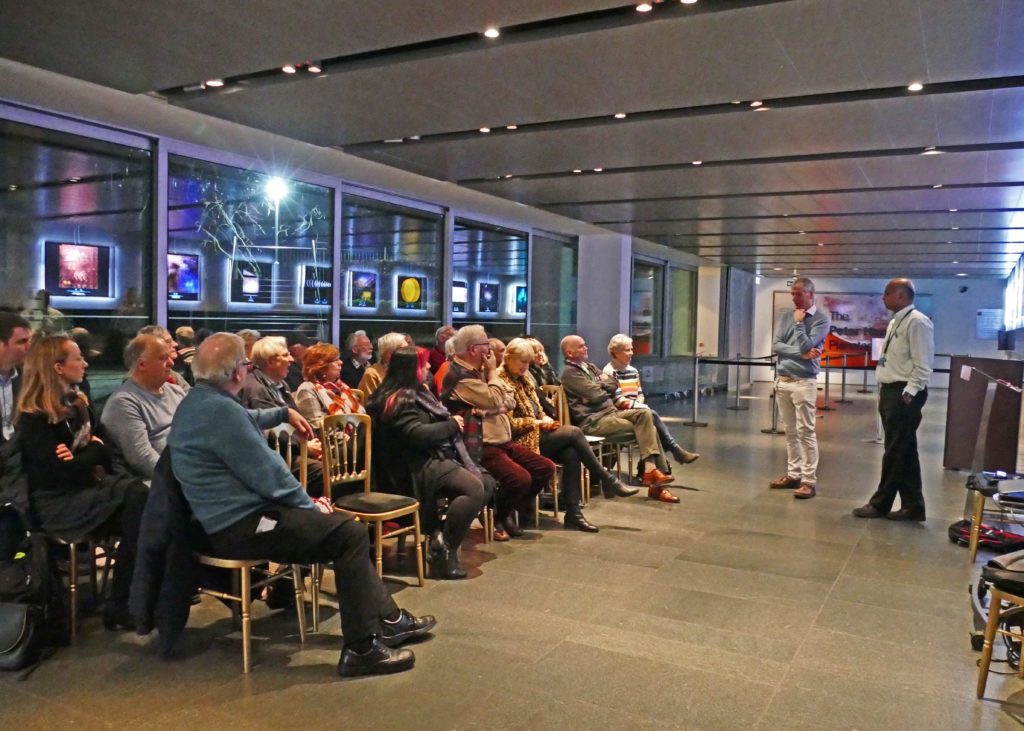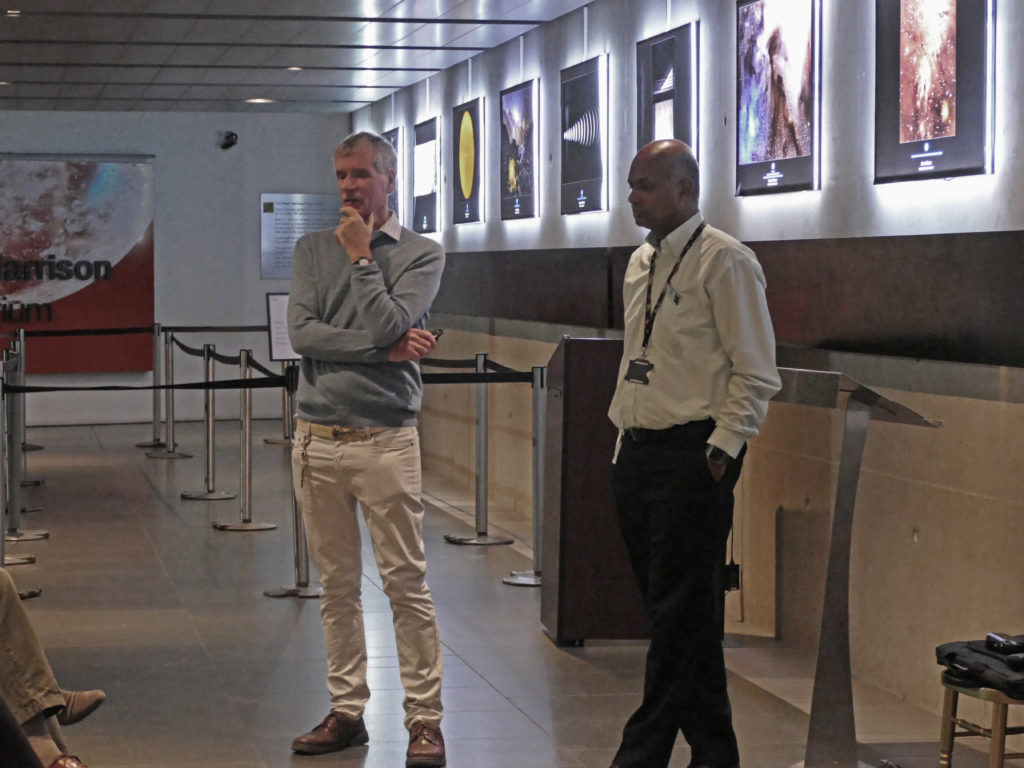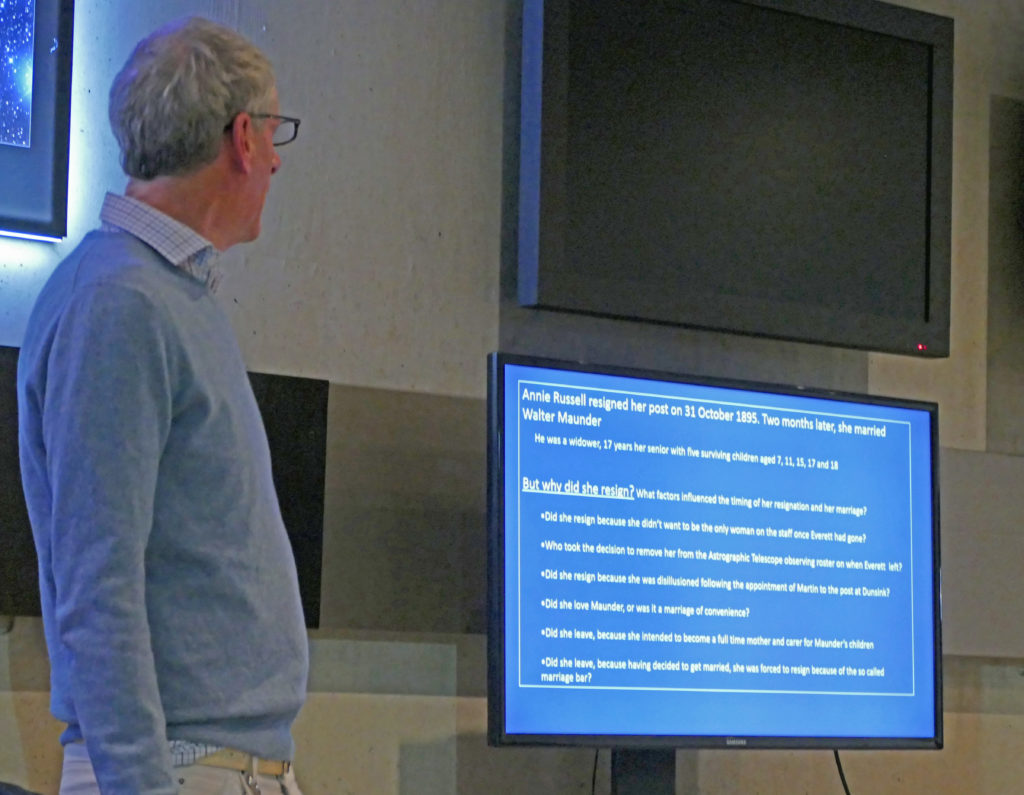January 15, 2019
“Opportunity or Exploitation: Women professionals at the Royal Observatory, Greenwich (1890–1895)” – History of Astronomy Talk – 8th January 2019
Report by: Bobby Manoo

In our first talk for this season, we were taken back to the Royal Observatory during the period 1890 to 1895 to explore the work of five women who were employed as ‘Lady Computers’. Isabella Clemes, Alice Everett, Harriet Furniss, Edith Rix and Annie Russell all have very intriguing history relating to their work at the Observatory and indeed tell a very curious tale—given some significant new research.
Our speaker for the night, Graham Dolan, runs a website dedicated to the history of the Royal Observatory and is a fellow of the Royal Astronomical Society and has spent many years working as Senior Education Officer at the Observatory.
Graham began his talk by looking at staffing arrangements at the Observatory during the late 1800s under the Astronomer Royal, William Christie. There were a number of initiatives underway to increase the number of large telescopes on the compound and we were shown pictures of the Observatory before and after some of these telescopes were put in place.
Due to funding constraints and with the coming of the new Astrographic Telescope in 1890, Christie decided to start up this bold experiment to employ women to undertake observations and technical calculations. His attention then turned to the University Ladies’ College at Cambridge where he sourced the women and made arrangements to have them start work at the Observatory on 14 April 1890. They were initially set to work on re-computing the transit observations from 1886.
It was interesting to learn about the connection that these women had to the University of Cambridge. Although the first college (Peterhouse) was founded in 1284, women were only admitted to the college during the second half of the nineteenth century when Girton and Newnham were founded. Of the five women who were being discussed, two of them were Girtonians—Everett and Russell—while the other three were Newnhams. It is worth noting that Isabella Clemes attained the standard of a Senior Optime from Newnham College.
The Royal Observatory archives contained very little about these five women. There are several instances of missing records and documents relating to their work, employment, salary and even applications to the posts which they held. Graham explained that the only artefact which mentions Clemes by name is a journal with her start date an indication of an £8.00 a month salary. It was apparent that the women were never paid on equal terms with the men at that time as the men were paid on average four times as much.
All five women eventually became members of the British Astronomical Association but only Russell became a fellow of the Royal Astronomical Society after a lot of struggles to accept women into the society. Graham presented us with extracts from minutes of meetings and also legal opinions which were recorded during all the deliberations.
The talk ended with a brief biography of all five women. Graham then asked the audience if they felt that the employment of the Lady Computers was an opportunity or exploitation. The majority were of the opinion that it was indeed a case of exploitation.
Many thanks to Graham for sharing his tremendous research with the group and we thank him for an enjoyable evening. For full details of his talk and the research material, Graham has kindly provided the following link:
http://www.royalobservatorygreenwich.org/articles.php?article=1281
Photos by Malcolm Porter:
Posted under: Flamsteed, History of Astronomy, Meeting Report



You must be logged in to post a comment.